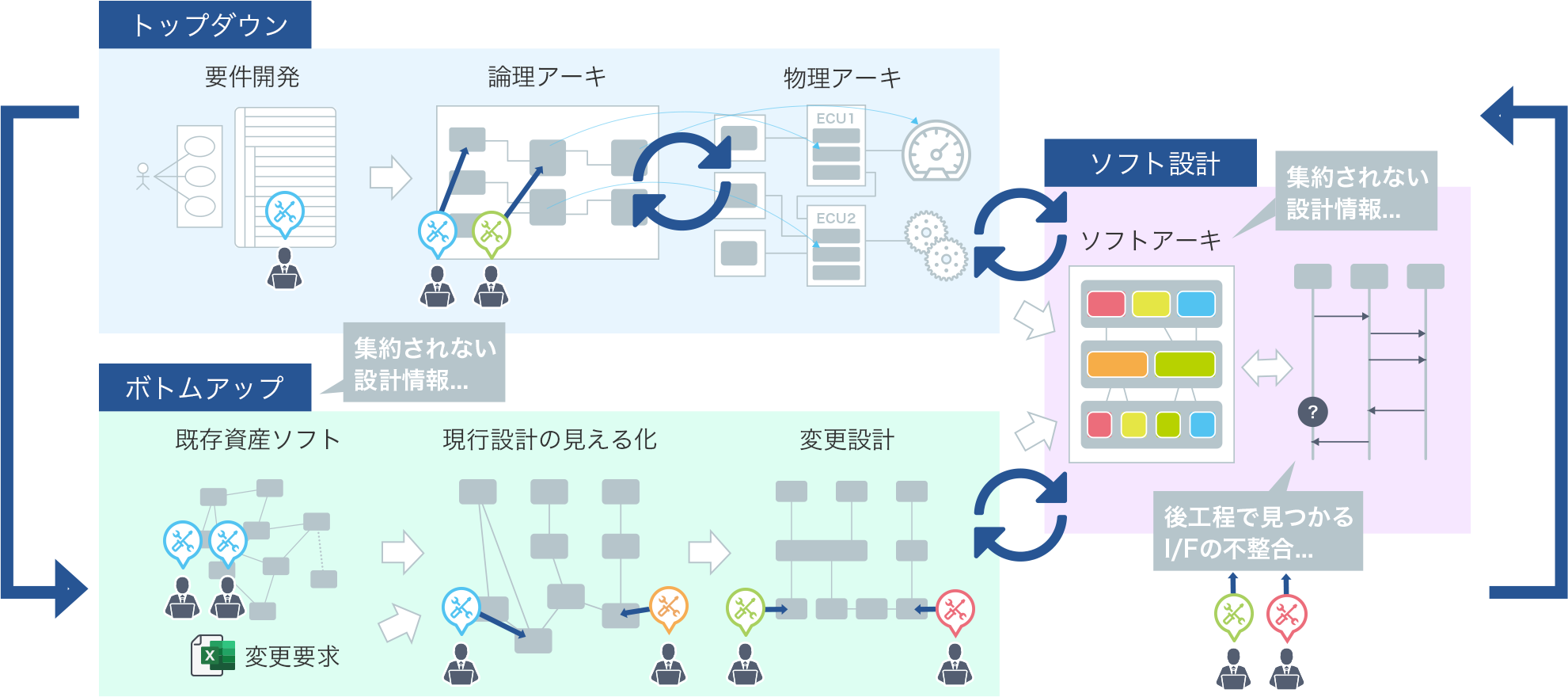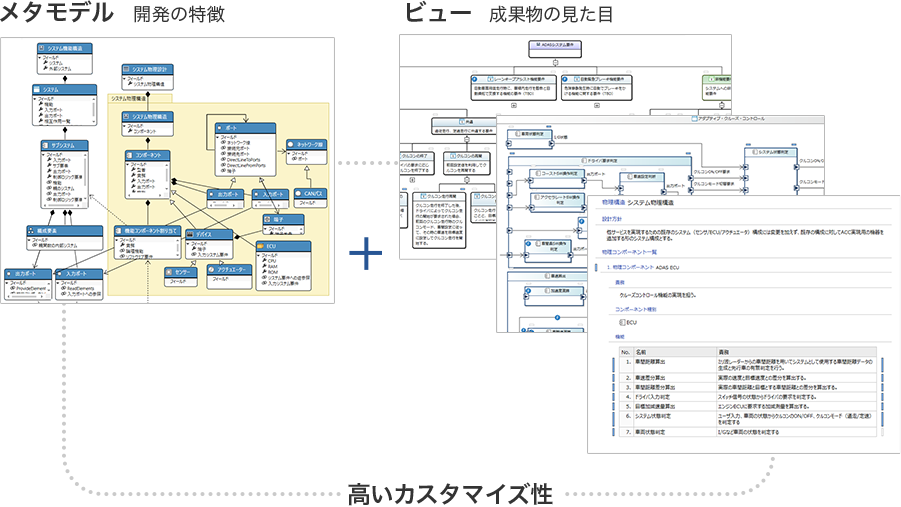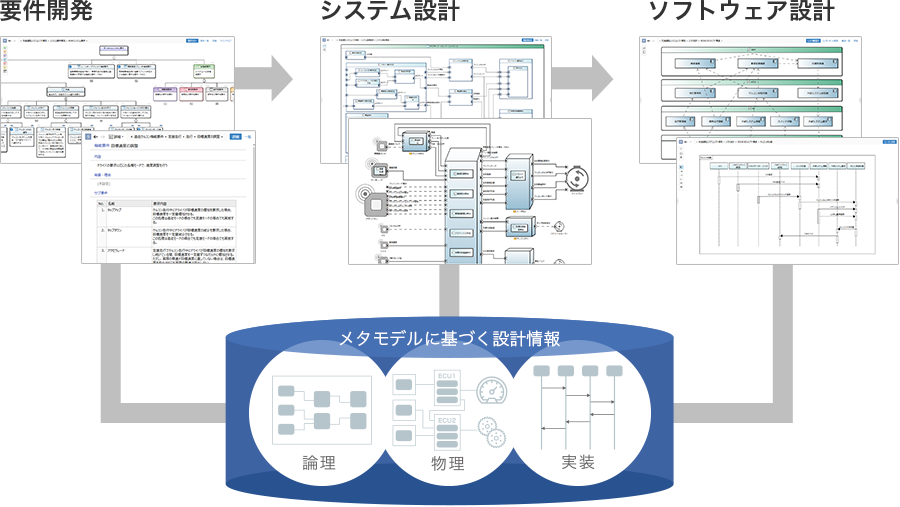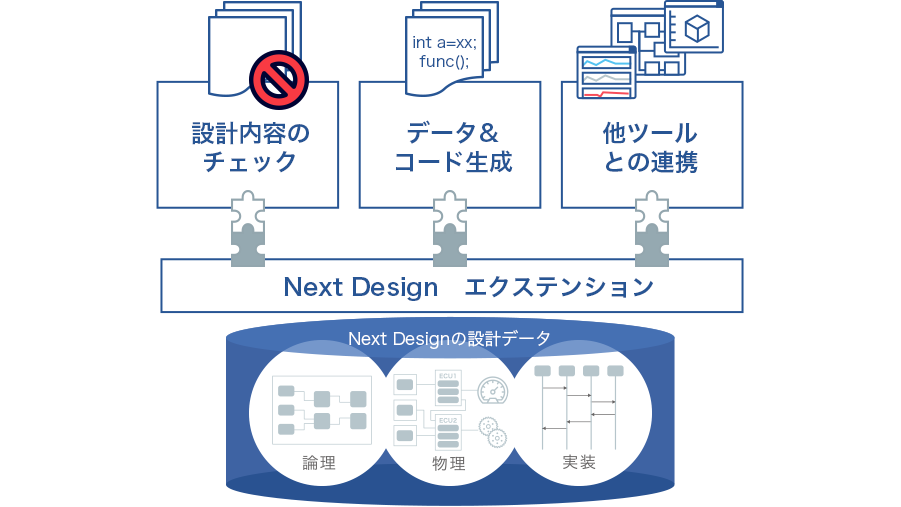CONCEPTNext Design's concept
- The tools required for the development of increasingly large systems.
When developing across multiple companies and teams, different design tools are used at different development sites and by different people, and design information is not consolidated in separate files.
In addition, I/F inconsistencies can occur due to maintenance omissions and gaps in design changes.
In the event of such inconsistencies, the development process is carried out by intervening between the parties concerned.
However, in the development of large-scale systems, there are multiple layers of coordination between the manufacturer and the software development company, and if inconsistencies are found late in the development process, it can lead to significant rework.
Therefore, the development of large-scale systems requires tools that "fit in the field", that can be "shared across the organisation", and that can be "automated to speed up the reconciliation process".


-
Fit for the field
Next Design uses a 'metamodel' that defines the structure and relationships of design information, and 'views' that define how the design information should be presented, to allow straightforward representation of the design methodology specific to the development site, from a diagrammatic overview to detailed specifications.
It allows you to organize and turn into a tool the design methods and processes specific to your development site, such as specifications and design documents, which until now have been expressed in Word/Excel or UML/SysML.
-
Design data can be shared across the organisation
By simply continuing to design as before, using field-fitted design tools, design data is stored and centralised as standardised digital data based on a metamodel, from system to software, from requirements to test. Centralised design data makes it possible to access the data you need, when you need it.
Development around this design data facilitates the standardisation and sharing of design data between teams across companies and organisations. -
Automation and tool chains can be achieved.
Because the design data is digitised, tools can handle it more easily than ever before.
extensions can be developed to automate various tasks such as design verification and integration with other tools.
automates high-load tasks such as traceability and interface consistency verification, helping to speed up the development cycle.





